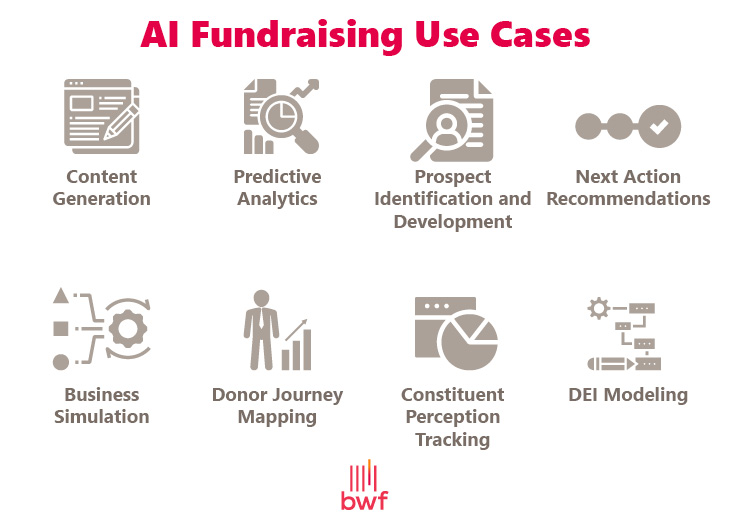Fundraising Consultant: Expert Guidance to Boost Your Nonprofit's Fundraising
The Role of Area Involvement in Nonprofit Fundraising: Structure Lasting Relationships for Lasting Support
Community engagement is progressively recognized as an important component of effective not-for-profit fundraising. The strategies and methods employed to involve neighborhoods vary widely, increasing crucial inquiries about effectiveness and influence.
Understanding Neighborhood Engagement
Neighborhood interaction is a vital element of successful nonprofit fundraising efforts. It refers to the approaches and tasks that companies use to attach with their local communities, cultivating partnerships that are mutually beneficial. Understanding area involvement involves acknowledging its multifaceted nature, that includes outreach, involvement, and cooperation. Nonprofits have to identify key stakeholders-- such as community participants, local services, and various other organizations-- to create efficient interaction methods.
Effective area engagement is based on energetic listening and responsiveness to the demands and passions of the neighborhood. This procedure includes getting feedback, recognizing area characteristics, and ensuring that the company's objective straightens with regional priorities. Engaging the neighborhood can take various types, consisting of public conferences, volunteer possibilities, and collaboration initiatives, each created to encourage involvement and financial investment in the company's goals.
Furthermore, area engagement need to be come close to as a continuous discussion instead of an one-time effort. By fostering an inclusive environment where community voices are heard and valued, nonprofits can develop a solid foundation for future fundraising undertakings. Eventually, a deep understanding of area engagement equips organizations to develop genuine connections that enhance their total efficiency and sustainability.
Benefits of Strong Relationships
Strong partnerships developed with community interaction yield many benefits for not-for-profit fundraising efforts. First and foremost, these connections foster depend on and integrity, essential parts in encouraging donors to contribute. When potential fans see a nonprofit actively associated with their community, they are a lot more most likely to rely on its goal and effect.

Furthermore, these partnerships assist in reliable communication. Nonprofits can utilize their links to share tales of effect, updates, and needs, making sure that supporters stay educated and engaged. This open line of interaction not just enhances bonds yet likewise urges word-of-mouth promotion, expanding the nonprofit's reach.
Lastly, strong neighborhood connections can draw in brand-new companions and enrollers. Businesses and individuals are extra inclined to straighten with companies that show purposeful neighborhood participation, giving extra sources and support that can substantially enhance fundraising abilities. Hence, cultivating durable partnerships via neighborhood involvement is integral to a not-for-profit's lasting fundraising success.
Approaches for Effective Involvement
Just how can nonprofits efficiently involve their neighborhoods to improve fundraising efforts? Developing targeted methods is essential for cultivating significant links. Initially, leveraging social media sites platforms allows organizations to share their anonymous goal dynamically and interactively, getting to a more comprehensive audience. Normal updates, involving content, and calls-to-action can galvanize neighborhood passion and involvement.
2nd, holding area events, such as workshops, volunteer opportunities, or fundraising drives, helps with in person communication, allowing nonprofits to display their influence and initiatives. These events not just increase funds yet also cultivate partnerships and enable area participants to engage directly with the reason.
Third, applying tailored communication methods can enhance involvement. Customizing messages to certain benefactor segments based on rate of interests and past payments fosters a feeling of belonging and investment in the company's goal.
Lastly, producing partnerships with regional organizations and neighborhood leaders can magnify outreach efforts. Joint campaigns can improve exposure and credibility, showing a cumulative commitment to the area's health. By incorporating these techniques, nonprofits can build enduring relationships that improve fundraising initiatives and drive sustainable support.
Gauging Involvement Success
While engaging the neighborhood is vital for successful nonprofit fundraising, measuring the efficiency of he has a good point these engagement efforts is equally important. Developing clear metrics allows organizations to evaluate just how well they are getting in touch with their audience and attaining their fundraising objectives. Key efficiency signs (KPIs) such as donor retention prices, volunteer participation levels, and engagement on social media platforms supply tangible information for analysis.
Frequently examining these metrics enables organizations to pivot their methods when necessary, making sure that area interaction remains lined up with their total objective. Moreover, sharing these results with stakeholders promotes openness and builds trust fund, motivating further community involvement. Ultimately, a robust measurement structure not just educates future fundraising campaigns yet also reinforces the partnership between the not-for-profit and its fans, laying the groundwork for sustainable success.
Study in Community Influence
Numerous study illustrate the profound influence that community interaction can have on not-for-profit fundraising success. One remarkable instance is the "Food for Thought" campaign, where a neighborhood food financial institution partnered with schools and companies to host area suppers. These events not only raised funds yet also promoted a feeling of belonging amongst participants, considerably increasing benefactor retention rates.
One more compelling instance is the "Green Spaces Task," which included local homeowners in the revitalization of city parks. This effort not only my website gathered financial backing from local organizations but likewise cultivated a volunteer base that added to recurring maintenance and programs. The feeling of ownership and pride amongst community participants converted into sustained contributions.
In the world of arts, the "Art for All" project effectively involved neighborhood musicians and patrons to develop joint art setups, causing enhanced visibility and donations for a regional arts nonprofit.
These instances highlight that when nonprofits prioritize area involvement, they can create lasting relationships that boost fundraising initiatives, making sure sustainable assistance and promoting a lively area culture. Such cases demonstrate that neighborhood interaction is not simply an approach yet a vital pillar of not-for-profit success.
Final Thought
In conclusion, community engagement is indispensable to the success of not-for-profit fundraising efforts. Inevitably, a robust structure of area support not only enhances fundraising prospective yet likewise cultivates a culture of cooperation, necessary for accomplishing long-term organizational objectives and sustaining purposeful impact. fundraising consultant.
Nonprofits need to determine vital stakeholders-- such as neighborhood members, regional services, and various other companies-- to produce efficient engagement techniques.

In final thought, area interaction is indispensable to the success of not-for-profit fundraising efforts.